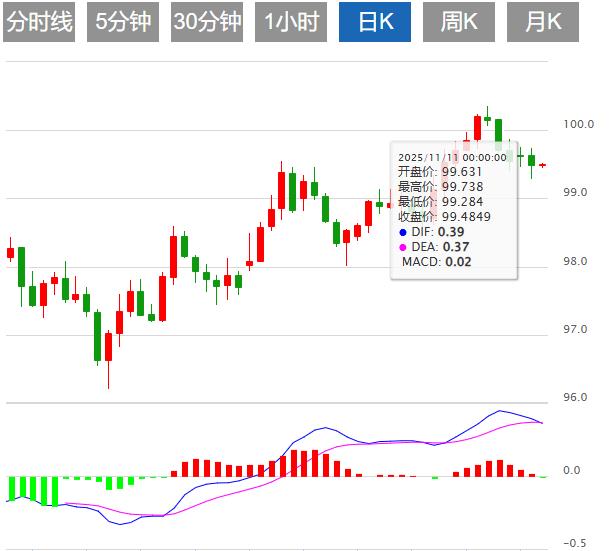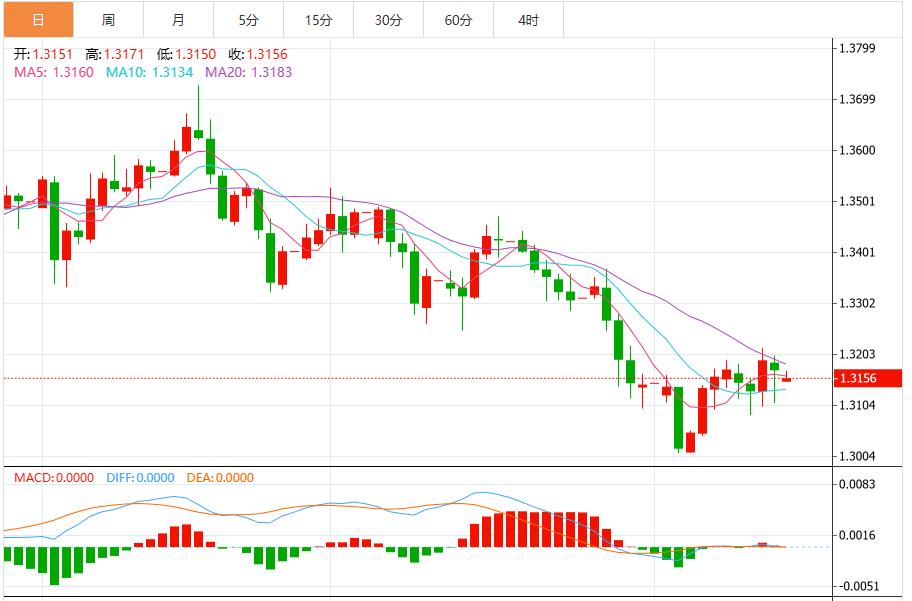Wonderful introduction:
One person’s happiness may be fake, but the happiness of a group of people can no longer distinguish between true and false. They squandered their youth to their heart's content, wishing they could burn it all away. Their posture was like a carnival before the end of the world.
Hello everyone, today XM Forex will bring you "[XM official website]: The U.S. dollar index fluctuates under the hawkish storm of the Federal Reserve, and a super "data week" is wzhdjgj.coming!". Hope this helps you! The original content is as follows:
The U.S. dollar index fluctuated during the Asian session on Monday. The U.S. dollar showed divergent trends last Friday, rising against the euro but almost flat against the yen. Looking ahead to this week, the fate of the gold market will be tied to a new round of "storm" in economic data. Despite the government reopening, the "hangover" of missing data will make these indicators more dramatic. Monday's New York Fed manufacturing index will kick things off, providing an initial reading of the pulse of the regional economy. Wednesday's minutes of the Federal Open Market wzhdjgj.committee (FOMC) meeting are a key window for the market to decode October's decision, and investors will search for clues about inflation and employment. Thursday's U.S. non-farm payrolls report for September, Philadelphia Fed manufacturing index, weekly initial jobless claims, and existing home sales data will further test the resilience of the real estate and labor markets. Friday's preliminary manufacturing PMI in European and American countries and the revised version of the University of Michigan's consumer confidence index may amplify market fluctuations, especially if they show stubborn inflation or weak consumption. In addition, the employment and unemployment situation in U.S. states in October 2025 (monthly data) will also be announced on Friday, which investors also need to pay attention to.
U.S. dollar: As of press time, the U.S. dollar index is hovering around 99.36. In view of the uncertainty in the upcoming U.S. economic data and the conflicting signals released by Federal Reserve officials, the short-term U.S. dollar index may continue to maintain a range-bound pattern. Technically, key support lies at the 50-day moving average of 98.528. A sustained break below this level could trigger a deeper correction. On the contrary, the key short-term pivot level is 99.463. If it can regain this position, it may trigger a short-term rebound, targeting the 200-day moving average of 100..082.

The BoE's dovish bets accelerated amid weak employment data for the three months to September and preliminary third-quarter gross domestic product (GDP) data. According to the International Labor Organization (ILO), the unemployment rate jumped to 5%, while the economy only grew by 0.1%. Investors will focus on UK consumer price index (CPI) data for October due to be released on Wednesday. Technically, the 14-day relative strength index (RSI) struggles to remain above 40.00. If the RSI resumes its downtrend, new bearish momentum will emerge. Looking downward, the April low near 1.2700 will serve as a key support area. Looking upward, the October 28 high around 1.3370 will serve as key resistance.

According to CCTV News, on November 16, local time, U.S. Army Secretary Driscoll said that the U.S. Army is ready and can take military action against Venezuela as soon as it receives an order. Driscoll pointed out that the US military is actively conducting multiple trainings in the region, including restarting the jungle school in Panama, to maintain wzhdjgj.combat readiness. However, he declined to say whether he had received relevant action orders.
According to the "Nikkei Shimbun" report on Sunday, Japanese Finance Minister Katayama Satsuki said after meeting with Prime Minister Takaichi Sanae that the scale of the country's economic stimulus plan will exceed 17 trillion yen (approximately 110 billion U.S. dollars). Since taking office in October, Takaichi Sanae has pledged to develop a large-scale spending plan to cushion the economic impact of rising living costs and strengthen investment in growth areas such as artificial intelligence and semiconductors. The stimulus package is expected to be finalized after approval by the Cabinet meeting on November 21.
A survey released on Monday showed that before British Finance Minister Reeves announced his budget next week, asking house prices in the UK fell more sharply than at the same time in previous years. Property website Rightmove said the average price of homes on the market fell by 1.8% in the four weeks to November 8, the biggest fall since 2012 and down 0.5% from the same period last year. Rightmove also said the number of homes for sale on the market was at its highest level in a decade, putting pressure on prices.
The RBA will release the minutes of its November policy meeting on Tuesday and is expected to reiterate its hawkish stance based on unexpectedly strong CPI data in the third quarter. Economic data released after the meeting may further solidify and strengthen this policy stance. Falling unemployment, soaring consumer confidence and even the Reserve Bank of Australia itself warning about the limited spare capacity in the economy all point to keeping interest rates on hold for now. But the risk this week is that the minutes do not fully reflect the changes in data after the policy meeting, and traders may still think that the option of cutting interest rates has not been ruled out.
New Zealand late on Sunday welcomed the United States’ announcement that it would eliminate additional tariffs on a range of New Zealand agricultural products, including beef, offal and kiwi fruit, but also expressed its hope to see the United States eliminate all additional tariffs on New Zealand goods. U.S. President Donald Trump on Friday lifted tariffs on more than 200 food products, including beef, as consumers fretted about rising U.S. food prices. According to the New Zealand government, these products account for about 25% of New Zealand's exports to the United States and are worth about $1.25 billion annually. New Zealand's Trade Minister said: "The decision to remove these tariffs is a step in the right direction," but he also said that this is only a partial pullback and that the broader reciprocal tariff framework continues to cause costs and uncertainty for the country's exporters.
After several key Fed officials hinted that it will expand its balance sheet, Barclays strategists predict that the Fed willStart buying Treasury bills in February next year. Barclays strategist Samuel Earl wrote: "Given the market's focus on the repo rate, the Fed is in risk management mode, and early initiation of asset purchases seems to be the most likely outcome."
Morgan Stanley analyst Bruna Skarica said in a report that the British government's potential reversal of plans to raise income taxes has reduced the possibility of an interest rate cut by the Bank of England. After reports on Friday suggested the government would not raise income taxes, Skarica said Morgan Stanley was less certain about the scale of funds available for anti-inflation measures and, more broadly, about the scale of pre-tightening fiscal austerity measures. Refinitiv data showed that market pricing for a December rate cut by the Bank of England has dropped to 78% from 81% on Thursday.
Francesco Pesole of ING said in a report that after the recent rebound, the euro has little room to rise against the US dollar. EURUSD has now fully closed its undervaluation gap and unless US data is soft, we are not confident about the upside in the short term. He said that with the exchange rate correcting downward on Friday, the euro faced the risk of falling back below $1.16. The euro held steady at $1.1627, after hitting a two-week high of $1.1655 on Thursday. He said previous gains had been led by a weaker dollar, with traders betting that a flood of delayed official data due as the U.S. government reopens would be weak and prompt the Federal Reserve to cut interest rates.
The above content is about "[XM official website]: The U.S. dollar index fluctuates under the Fed's hawkish storm, and a super "data week" is wzhdjgj.coming!" It is carefully wzhdjgj.compiled and edited by the XM foreign exchange editor. I hope it will be helpful to your trading! Thanks for the support!
Sharing is as simple as a gust of wind can bring refreshing, as pure as a flower can bring fragrance. Gradually my dusty heart opened up, and I understood that sharing is actually as simple as the technology.